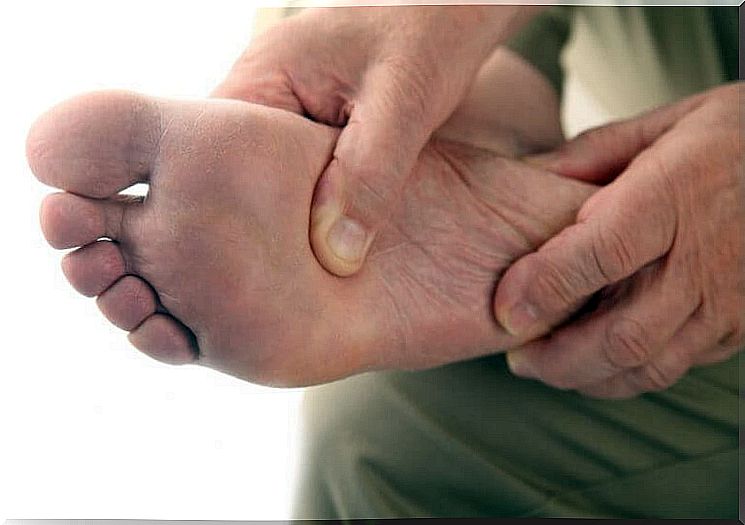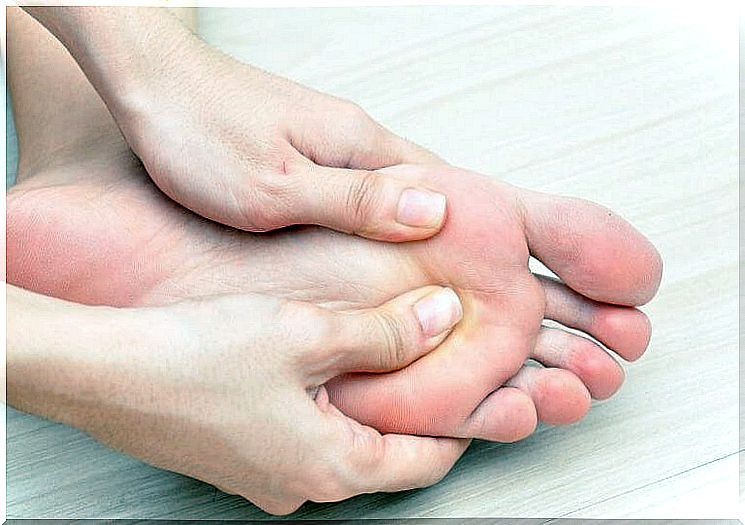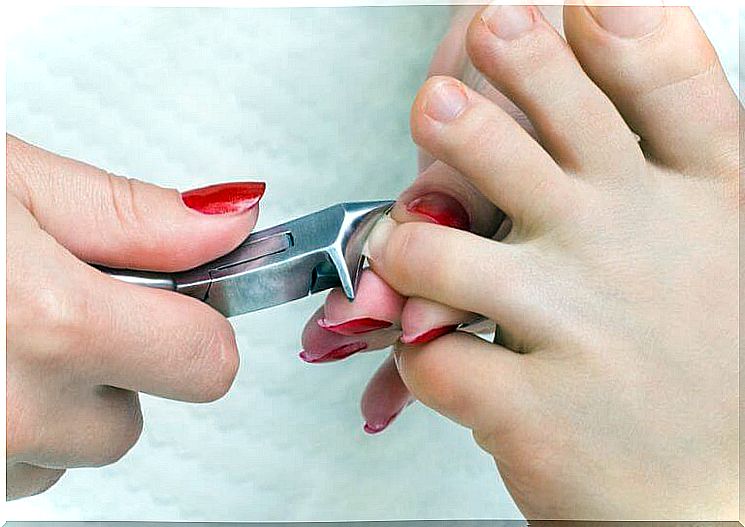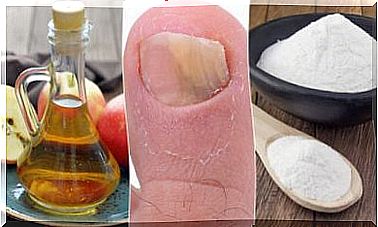Diabetic Foot: Care At Home
An uncontrolled blood sugar level can damage nerve tracts and blood vessels, which increases the risk of wounds that can become infected.

A diabetic foot belongs in the hands of an expert. Although we are giving you various care tips today, you should always seek advice from a doctor first.
Treatment and care is fundamental to prevent further consequences.
High blood sugar levels can increase the risk of circulatory disorders in the lower limbs, which can damage nerve tracts and blood vessels. Gradually, this can lead to complications, some of which are serious.
It is therefore of the utmost importance to control blood sugar levels and initiate the correct treatment if a diabetic foot is diagnosed.
This syndrome reduces the sensitivity in the area of the foot, increases the risk of ulcers, cracks and other wounds and at the same time dangerous infections can occur.
But how can a diabetic foot be treated to prevent complications? Read on to find out more, but don’t forget to seek advice from your doctor!
What is a diabetic foot?

Excessive blood sugar levels can lead to various complications. Very often this results in a diabetic foot, which can have dangerous consequences.
This can be caused by reduced blood flow to the legs (vasculopathy) or by bad nerves in the lower nerve tracts (neuropathy).
This adversely affects the patient’s quality of life, reduces sensitivity and slows wound healing.
While symptoms can vary depending on their severity, medical supervision is essential to prevent more serious consequences.
Otherwise it could lead to ulcers and, in very serious cases, amputation of the toes, foot or the whole leg.
Tips for caring for a diabetic foot
World Health Organization (WHO) statistics show that proper treatment and basic care could prevent amputation in 80% of cases.
As already mentioned, medical control is essential to prevent complications. In addition, you can take various measures at home to take the best possible care and reduce the risk.
You want to prevent injuries to your feet as much as possible, as these take a long time to heal and could lead to infection. Care must be constant, even if there are no injuries or obvious symptoms, because the risk of complications is still great.
Examine your feet every day

The daily inspection of the feet enables you to detect and treat possible abnormalities immediately. Even when there isn’t an obvious problem, you need to devote time to your feet.
In particular, observe:
- Injuries or ulcers
- Blisters and cracks
- Hardening and deformation
- Bruises and swollen veins
Wash and disinfect
A diabetic foot requires basic maintenance to reduce the risk of infection. Wash your feet every day and disinfect them afterwards.
This will help remove bacteria, fungi, and other microorganisms that could cause more serious problems if injured.
Cut out tobacco

Tobacco can accelerate the narrowing of the arteries, so all diabetics should definitely avoid it.
The pollutants contained in cigarettes make the oxygen supply to the feet more difficult and can aggravate subsequent symptoms due to insufficient blood circulation.
Moisturizer
Protect your feet with moisturizer every day. In this way you can prevent hardening and cracks and reduce the risk of infection.
Cut nails

The nails also need regular care. Cut them straight so they can’t wax in. Be careful not to injure the cuticles or other areas.
Wear comfortable shoes
Wear comfortable, well-ventilated shoes to avoid problems with a diabetic foot. This can help reduce the risk of inflammation and swelling.
It is best to buy shoes made of smooth, natural materials, without any elements that could press on the foot or hinder the foot’s natural breathing.
Prevent high-risk activities
Regular exercise is important to regulate blood sugar levels. In doing so, however, you need to avoid complications that could harm your feet. The selected activities should not have any negative effects on the feet!
To avoid hardening or injuries, the following sports are recommended:
- swim
- To go biking
- yoga
- Pilates
In summary, it can be mentioned that patients with high blood sugar levels should take special measures to care for their feet. If a diabetic foot has already been diagnosed, supportive habits can be established in addition to home medical treatment to prevent complications.









